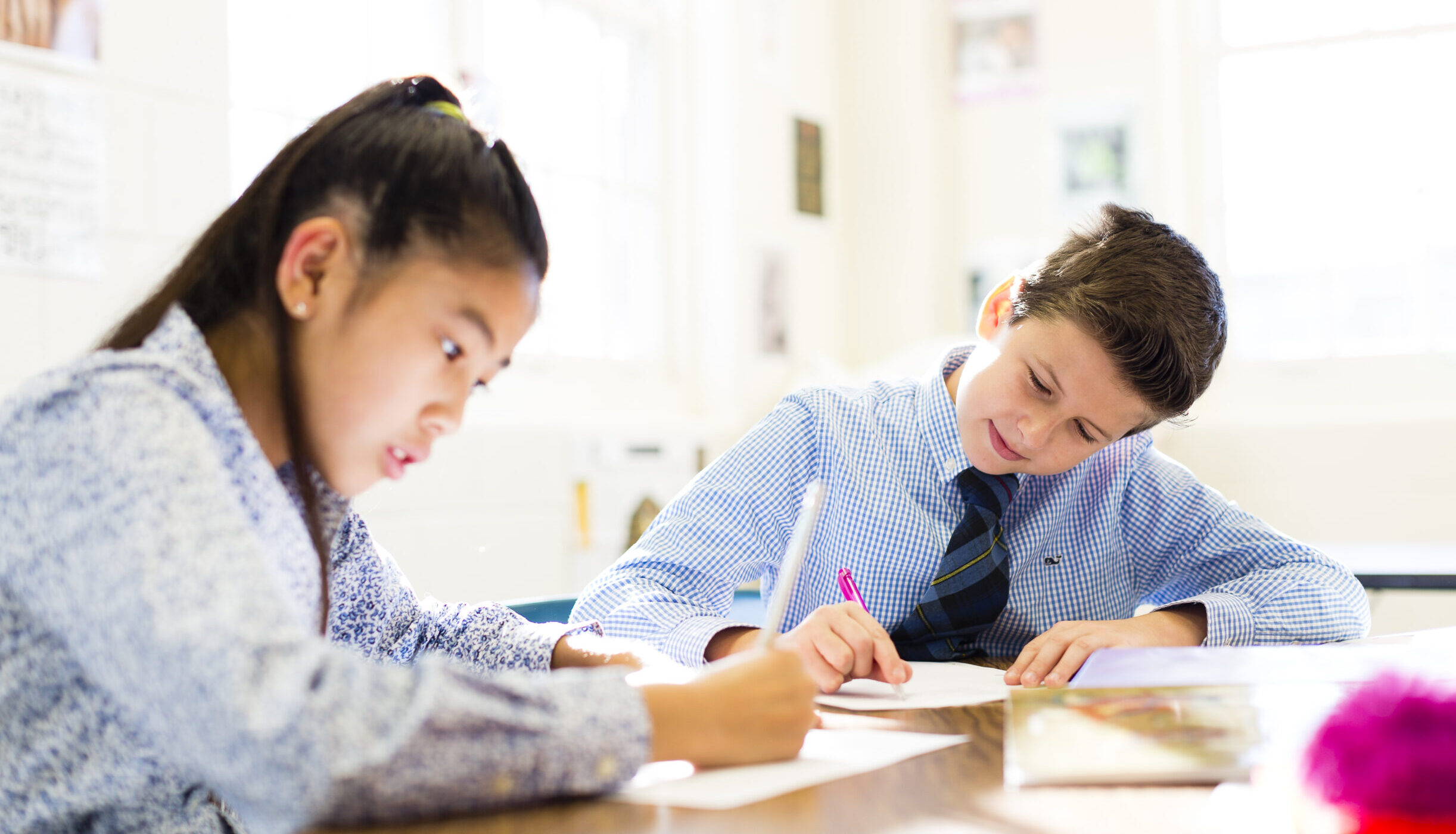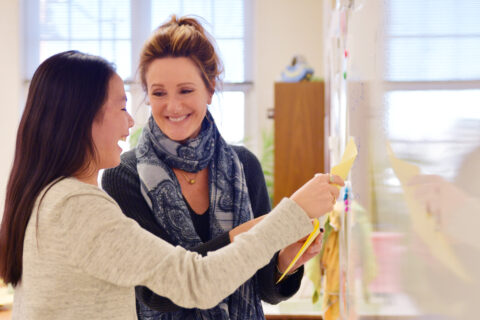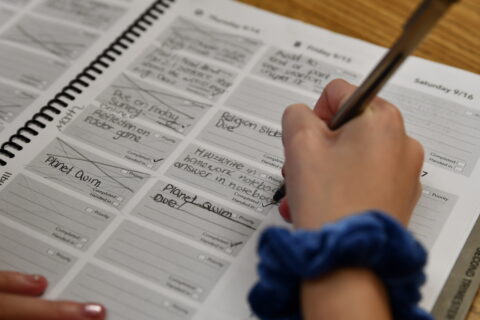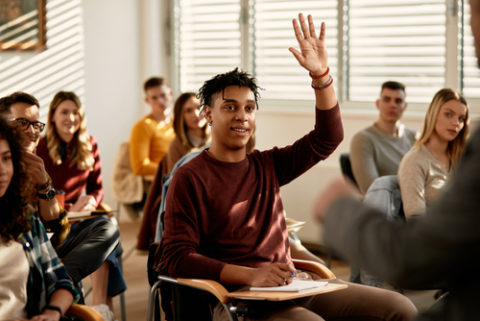By Devon Rothschild
Editor’s Note: This article was originally published in Volume 4 of “Think Differently and Deeply” (2020).
The summer before beginning my third year of teaching Middle School Science, our faculty was tasked with reading “Neuroteach,” (1) a book that focused on the connection between teaching and Mind, Brain, and Education Science. I also had the privilege of attending a five-day conference led by The Center for Transformative Teaching and Learning, (2) which also emphasized the importance of bringing researched practices into the classroom.
Inspired by these two professional development opportunities, and with just enough teaching under my belt to know that I wanted to make more meaningful connections with my students, I knew my classroom was going to change. However, the changes that happened the following year and the impact on my students’ learning surprised even me, and made me love teaching more than I had imagined!
A New Year
I began the school year with a commitment to deepening my relationships with my students and a challenge of making learning more fun. Fun because it is a way to increase students’ deep cognitive engagement, and relationships because these underpin many research-informed strategies. I shared these goals with my students the first week of school, thinking they would help hold me accountable. I also decided to be very honest about how nervous I was to change my current practices. To bring more joy into my classroom, I would have to give up some control, and this was a scary thought for a highly-structured teacher.
To my delight, my students responded well. Not only were they excited about the increase in fun, they were moved by my honesty and willingness to try things out of my comfort zone. I took them outside more. I started Fun Dart Friday, ending class ten minutes early every Friday to allow them to answer a formative question about the week’s learning and then earn points for their team by throwing darts at a dart board. (Don’t worry, they were plastic darts!) I made time to do a 2 x 10 with some students I was struggling to connect with—spending two minutes speaking to the same student about something other than school for ten days in a row. (3) I learned about FortNite. I asked them about their weekends. Sometimes I even sang my lessons to them. We began to develop a strong classroom community based on trust and joy.
Surprise – An Action Research Project Appears
A couple of weeks into the year, we set about establishing our classroom expectations. The previous summer, I learned that taking notes by hand allows for greater retention of information, as compared to taking those same notes electronically. (4) Based on that research, I decided to require my students to take notes by hand. Even though each student in my class had an iPad, they were not allowed to be out in my classroom except for specific assignments. However, my students questioned the findings of the research I was sharing. Thankfully they were asking questions and were curious about the research. I assigned them a summary article on the research for homework. (5) I believed this would be the end of the discussion. But seventh graders are not so easily convinced. They believed the research they read about did not apply to them and requested I change my policy.
And here is where the risk comes in! I asked my students if they would be willing to conduct an experiment in class to settle this issue once and for all. They agreed, but not before challenging me to change my note-taking policy if the results showed something different than what I had presented to them. I (reluctantly) agreed.
Thinking this a wonderful opportunity to teach my students about the scientific method, I had students design the experiment in groups and present each idea to the whole class. Each class then had a whole group discussion about the best way to move forward.
Ultimately, students were randomly assigned to either a hand-written or electronic note-taking group. Each student took a formative pre-assessment and then took notes using the method to which they had been randomly assigned. Finally, students took a post-assessment and the percentage increase in scores were averaged for each of three classes. Students graphed and analyzed the results. To my relief (but not theirs), each class had greater improvement in the group of students that had taken hand-written notes than those that had taken notes electronically. Phew, the results supported what the research had shown!
The Impact on Student Learning
What was most exciting about this action research was my students’ reactions! While they were disappointed that they hadn’t proved me wrong, they were engaged and thoughtful about the way they were learning. One student claimed the action research project made the students more attentive to the way they learn. Metacognition, thinking about one’s own thinking, (6) became a topic we discussed often in class. There were also strengthened relationships in the classroom based on my willingness to try something that might have failed. Students became more willing to try new things and were more open to experiment and setbacks. Having a classroom built on trusting relationships that accepted that failure could be a part of learning led all of us to be more vulnerable and to take more risks. And this, in turn, led me to feel more comfortable letting go of more control to add more joy into the classroom. It was a win-win for all those involved.
A special thank you: While all of my students willingly participated in the action research project, several stepped out of their comfort zone and presented this research to faculty from Sandy Spring Friends School and to teachers throughout the country. Thank you to Eva Derryberry, Yousef Eldadah, Ethan Lee, Ian Neill, Ella O’Neill-Bryant, and Julia Purdy for their bravery and insight.
Devon Rothschild (dmroths@carrollk12.org) is a Middle School Science teacher for the Carroll County (MD) Public Schools. She is a former Science teacher at Sandy Spring Friends School, where this action research project took place.
Citations
(1) Whitman, G., & Kelleher, I. (2016). Neuroteach: Brain science and the future of education. Lanham: Rowman & Littlefield.
(2) The Science of Teaching and School Leadership Academy. (2018). https://www.thecttl.org/. The Center for Transformative Teaching and Learning at St. Andrew’s Episcopal School.
(3) Smith, D., Frey, N., Pumpian, I. & Fisher, D. (2017). Building equity: Policies and practices to empower all learners. Alexandria, VA: ASCD.
(4) Mueller, P. A., & Oppenheimer, D. M. (2014). The Pen is Mightier Than the Keyboard. Psychological Science, 25(6), 1159-1168.
(5) Staff, N., & Doubek, J. (2016, April 17). Attention, Students: Put Your Laptops Away. Retrieved from https://www.npr.org/2016/04/17/474525392/attention-students-put-your-laptops-away.
(6) Chen, P., Chavez, O., Ong, D., & Gunderson, B. (2017). Strategic Resource Use for Learning: A Self-Administered Intervention That Guides Self-Reflection on Effective Resource Use Enhances Academic Performance. Psychological Science, 28(6), 774-785.




